How To Keep Grass Green In Winter 2022

Keeping your grass green in winter can be achieved with a couple of seasonal lawn care practices. These include overseeding with a cool-season grass, removing leaves and debris, applying fertilizer and aerating your lawn. These lawn care practices will help keep your lawn green all year long!
Grass is a beautiful part of any landscape, but keeping it green in winter can be a challenge. Many people think that they have to let their grass die off during the winter, but this isn’t true! The cold weather and lack of sunlight sure can take its toll, leaving your lawn looking brown and patchy. But with a little bit of care, you can keep your grass green throughout the winter!
Keep reading to learn more about seasonal lawn care tips that will help you maintain your lawn’s health all winter long!
6 Simple & Efficient Ways To Keep Grass Green In Winter

No matter what kind of winter you endure, there are a couple of things you can do to keep your lawn green in spring and summer.
To get green grass in winter, you must invest in some lawn care treatments before winter hits. After carrying out your fall lawn care, you shouldn’t neglect your lawn maintenance.
Fertilize
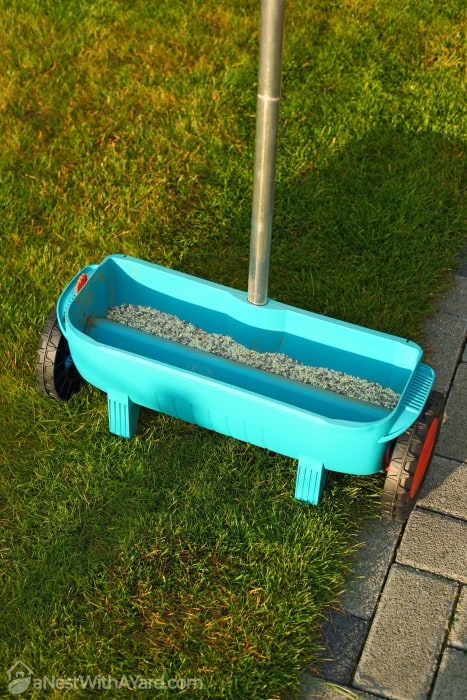
It sounds crazy, I know, but fertilizing your grass during the winter can help a lot. Once your grass is actively growing, you should fertilize it once and then water it heavily. Fertilizing not only prepares the grass for next spring, but also keeps it in great shape in winter.
After fertilizing, water the grass lightly to wash the fertilizer off the blades of grass and drive it into the ground.
In addition to this, fertilizing in the fall will help herbaceous plants retain their green color throughout the winter. Lawns should be fertilized in the fall when the temperature drops and when it tends to continue to grow steadily.
If you live in a region with winter snowfall, remember that fertilizing the grass before snow falls helps nourish the grass. Cover it in late fall or early winter, just before the first hard frost sets in, using a suitable fertilizer. Of course, fertilization can also reduce the risk of it dying in the winter season.
Check out this video by YouTube user Garden Lawncare Guy to find out his secret to maintaining a deep green winter lawn:
Aerate
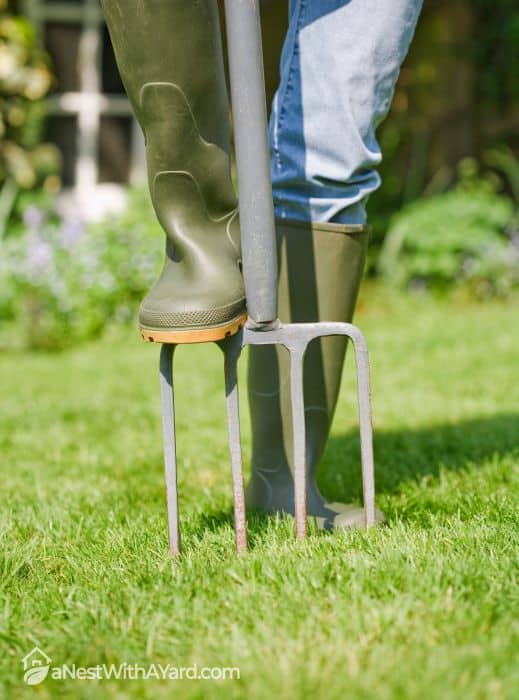
Lawn aeration loosens the soil and improves the growth and greenness of fall and winter grasses. Aerating your lawn allows essential nutrients, water, sunlight and oxygen to sink in and reach its root system. This will promote a healthy and deep root system, giving you a lush green lawn that is better equipped to defend against the intrusion of unwanted weeds and grasses.
This video by YouTube user Silver Cymbal includes some great tips on how to aerate your lawn:
Sow Your New Seeds

If winter green grass is your goal, sow your seeds in the fall as existing warm season grasses start to lose their green color. Instead of a lawn full of dormant brown grass, you’ll see green vegetation throughout the winter.
In areas where the winter temperatures drop below 55 degrees, plan to sow your warm-season lawn with hardy grass seeds in the fall. Taking care of a warm grass lawn with frost resistant grass is an easy and effective way to keep your lawn green during the cold months.
In areas where the temperature does not drop regularly enough to require reseeding, keep the grass clear of leaves, fertilize in the fall, aerate compacted soil, and maintain an adequate watering schedule.
By purchasing good quality grass seeds for your lawn, you can be sure to get the green and lush winter lawn you want, fast. Use a regular grass spreader to spread the seeds evenly at the speed indicated on the seed label. You must wait at least a week or two before mowing the grass for the first time after planting winter grass.
This video by The Grass People on YouTube explains how to sow new grass seeds properly:
Monitor Your Water Level
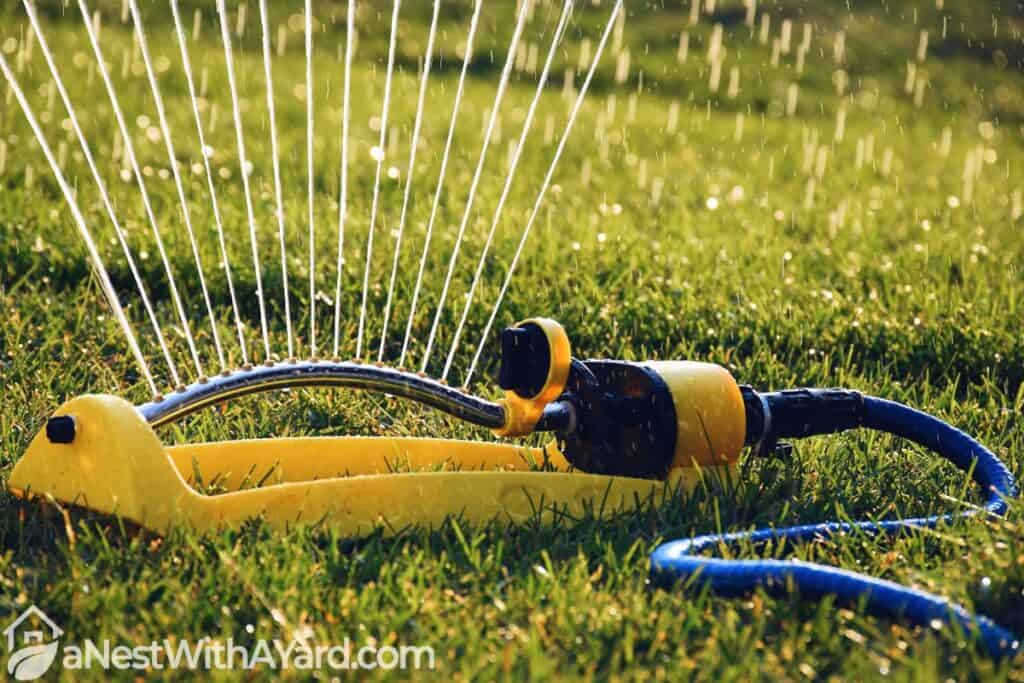
It is very important to monitor the water level in winter and water the grass when it is low. First of all, you will need to water and care for your grass in the morning when the temperature has warmed up a bit. You can also water your grass in the late afternoon or evening. It’s best to avoid watering in the middle of the day, as that’s when temperatures are usually the highest.
Watering should be adjusted when the weather cools so that the grass doesn’t get too much water, resulting in overhydration, and lawn mowing should continue regularly to encourage green leaf growth. Once established, lawn grasses require about 1 inch of water per week through combined irrigation or rain.
Check out this video by YouTube user Pest and Lawn Ginja to learn how to test water depth:
Mow Correctly
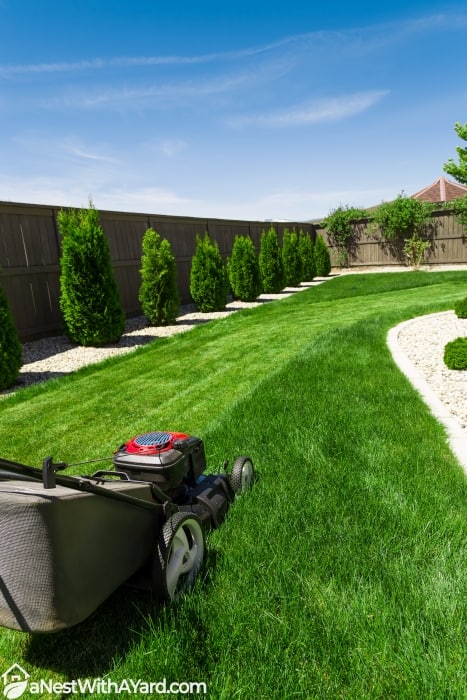
During the growing season, mow the grass to an appropriate height and water regularly if it is not raining. Start mowing as soon as the green winter grass reaches 3 inches in height. Avoid all weed control products until you have mowed your winter green grass three or four times.
You should also consider using a mulching mower to patch up bare patches and a snowblower to collect some grass clippings to use as mulch and keep your lawn moister.
Have a look at this video by YouTube user Organo – Lawn of Boulder to learn how to mow your grass the correct way:
Remove Weeds

By removing any remaining weeds during preparation, you clear your lawn and garden of anything that could harm its growth. Mowing the lawn will help with weeding and mowing, and raking will bring the soil to the surface, which is a practical way to strengthen grass roots. Rake the lawn, mow the grass, then proceed to cover it with fertilizer and/or seeds.
Have a look at the informative video below by YouTube user LoveTheGarden to learn more about how to prepare your lawn for winter:
FAQs
Why Is Grass Not Green In Winter?
Grass is not green in winter because of either dehydration or overhydration. Grass needs moisture all year round and the cold weather could dry out your grass and damage the soil. To that point, you also need to be mindful of over-watering your grass to avoid over hydration.
Can Grass Be Green In Winter?
Grass can be green in winter if you fertilize it at least two or three times over the winter season. The fertilizer will give the grass strength. To keep your winter grass looking beautiful and green, you should apply a decent amount of nitrogen to support top growth.
How Do You Keep Grass From Turning Brown In The Winter?
You can keep grass from turning brown in the winter by following a couple of simple lawn care practices. This can include fertilizing regularly, ensuring that your winter grass is perfectly hydrated and mowing it regularly while making sure you remove all grass clippings.
Does Epsom Salt Turn Grass Green?
Epsom salt does turn grass green. Epsom salt is a safe and natural product that will promote luscious green winter grass growth. You can use epsom salt to support healthy seed germination, nutrient absorption, growth, and general health of your lawn.
What Do You Put On Bermuda Grass In The Winter?
You can put cool season grass seed on Bermuda grass in the winter. Winter rye will help maintain a healthy lawn and keep grass green. While Bermuda spends winter dormant and brown, it lasts much longer than warm season grasses, such as Zoysia.
Now You Know How To Keep Grass Green In Winter
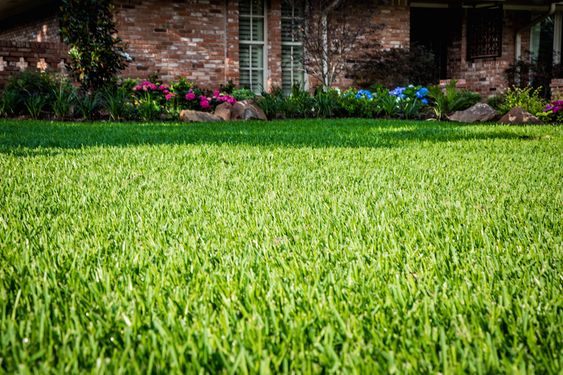
Keeping grass green over the winter months is not as difficult as it seems. With a couple of simple and inexpensive lawn care practices, you’ll be well on your way to keeping your lawn healthy despite the cold winter temperatures.
As we begin to arrive in early spring, it is important to remember to make the necessary adjustments to your lawn, landscaping, and garden watering schedule so your lawn continues to thrive through spring.
Did you find this article helpful? Please feel free to leave me a comment below if you did and share this with a friend.







